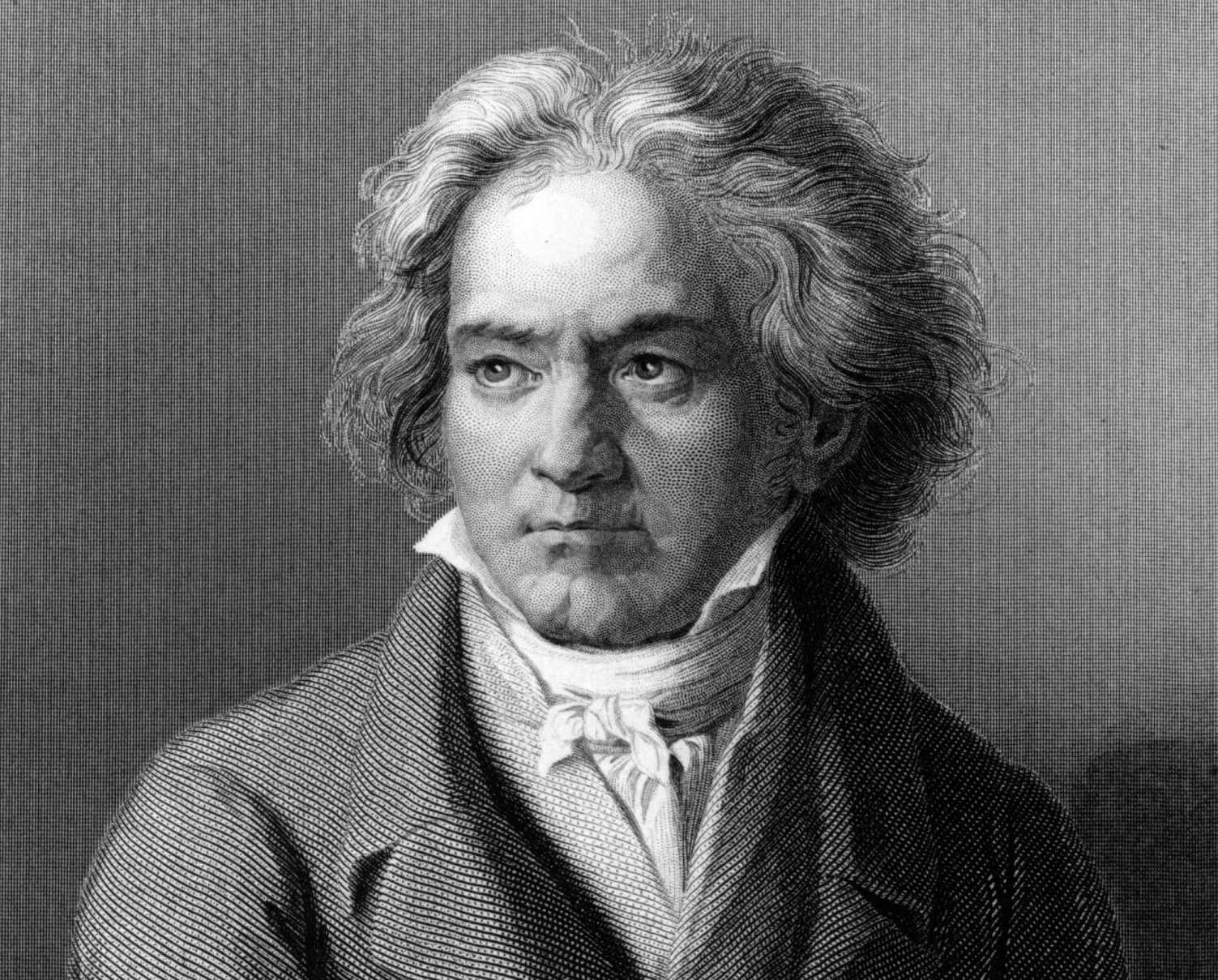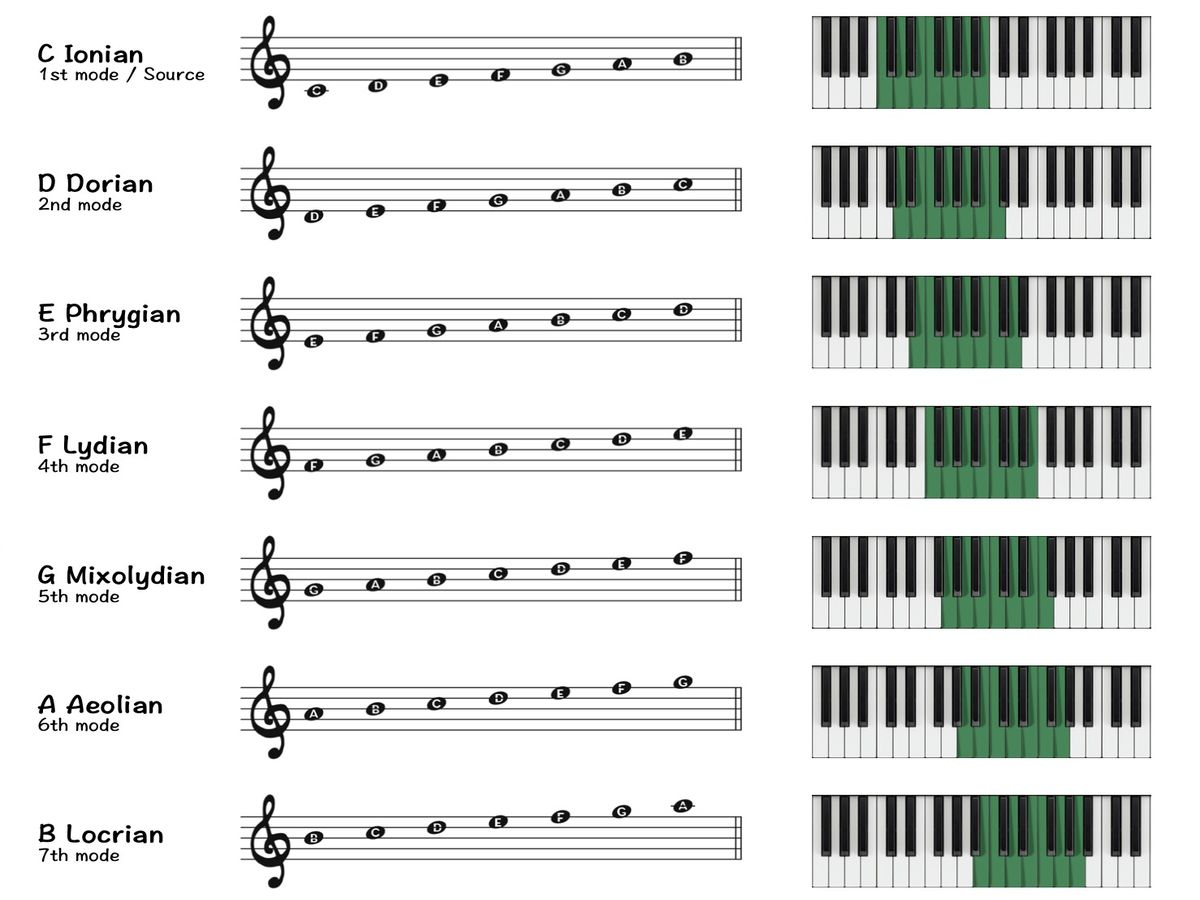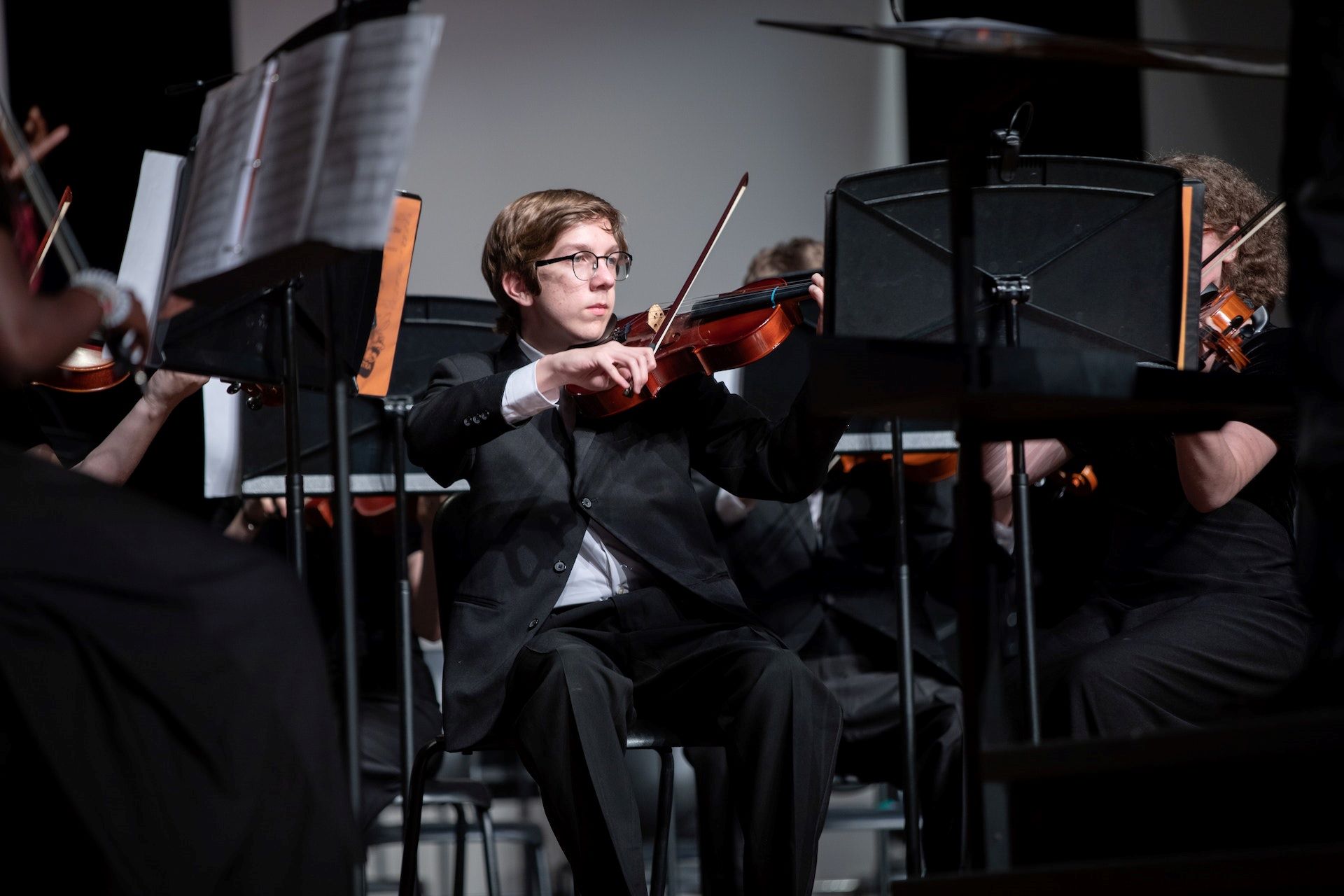Home>Genres>Symphony>How Long Is Beethovens 6Th Symphony Called Pastoral


Symphony
How Long Is Beethovens 6Th Symphony Called Pastoral
Modified: February 24, 2024
Discover the duration of Beethoven's 6th Symphony, commonly known as the Pastoral Symphony. Dive into the enchanting melodies and captivating rhythms of this exquisite symphony.
(Many of the links in this article redirect to a specific reviewed product. Your purchase of these products through affiliate links helps to generate commission for AudioLover.com, at no extra cost. Learn more)
Table of Contents
- Introduction
- Background of Ludwig van Beethoven
- The Inspiration Behind Beethoven’s 6th Symphony
- Overview of Beethoven’s 6th Symphony: Pastoral
- The Structure and Duration of Beethoven’s 6th Symphony
- Musical Themes and Motifs in Beethoven’s Pastoral Symphony
- The Influence and Impact of Beethoven’s 6th Symphony
- Conclusion
Introduction
Ludwig van Beethoven is undoubtedly one of the most revered composers in Western classical music. His profound influence on the genre is evident in his vast body of work, including symphonies, concertos, and chamber music. Among his remarkable symphonic compositions, the 6th Symphony, also known as the “Pastoral Symphony,” stands out as a masterpiece that showcases Beethoven’s innovative musical genius.
Beethoven’s 6th Symphony was composed during the early 19th century and provides listeners with a unique immersive experience. Unlike his more intense and dramatic symphonies, the Pastoral Symphony takes a departure towards a tranquil and picturesque musical landscape. With its evocative melodies and vivid imagery, the symphony aims to convey a deep sense of connection to nature and the beauty found within it.
In this article, we delve into the intriguing world of Beethoven’s 6th Symphony, exploring the inspiration behind its creation, its structure and duration, the musical themes and motifs presented within, as well as the lasting impact it has had on the world of classical music.
By gaining a deeper understanding of the Pastoral Symphony, we can appreciate Beethoven’s unrivaled ability to evoke emotions through his compositions and the timeless beauty of his music.
Background of Ludwig van Beethoven
Ludwig van Beethoven, born in Bonn, Germany, in 1770, was a composer and pianist whose works continue to be celebrated centuries after his death. Beethoven’s musical journey was marked by incredible talent and perseverance, despite facing numerous personal and health challenges.
From a young age, Beethoven displayed remarkable musical aptitude, initially learning the piano and violin from his father, Johann. Recognizing his son’s potential, Johann enlisted renowned composers and musicians to further educate Beethoven, who quickly developed a reputation as a prodigy. By his teenage years, Beethoven was already an accomplished pianist and composer.
As Beethoven entered his twenties, he moved to Vienna, the epicenter of European music at the time, to pursue his musical career. There, he studied composition with esteemed composers such as Joseph Haydn and Johann Georg Albrechtsberger. Beethoven’s unique compositions soon gained attention, and he established himself as a visionary in the transition between the Classical and Romantic eras of music.
However, Beethoven’s life was not without its share of adversity. In his late twenties, he began experiencing hearing difficulties, leading to the gradual loss of his hearing over the course of his life. This profound loss was a tremendous blow for a composer who relied heavily on his ability to hear and appreciate music.
Despite his hearing impairment, Beethoven persevered and continued to compose groundbreaking works. His compositions, including his symphonies, revolutionized the structure and emotional depth of classical music, pushing the boundaries of what was deemed possible within the genre.
Beethoven’s 6th Symphony, the Pastoral Symphony, is a testament to his resilient spirit and unwavering dedication to his craft. It showcases his ability to channel his emotions and experiences into musical expressions that resonate with audiences to this day.
The Inspiration Behind Beethoven’s 6th Symphony
Beethoven’s 6th Symphony, the Pastoral Symphony, is a departure from the conventional symphonic structure of the time. It is infused with vivid imagery and evokes a deep appreciation for the wonders of nature. Understanding the inspiration behind this symphony allows us to appreciate Beethoven’s connection to the natural world and the emotions he aimed to evoke through his music.
The inspiration for the Pastoral Symphony lies in Beethoven’s love and fascination with nature. Living in Vienna, Beethoven often sought solace in the countryside, finding peace and inspiration amidst the landscapes, flora, and fauna. The symphony serves as a musical diary of his profound experiences and reflections on nature’s beauty.
Beethoven viewed nature not merely as a backdrop, but as an integral part of the human experience. He believed in the inherent spirituality and healing power of the natural world. In the Pastoral Symphony, he sought to capture and convey these sentiments through a series of musical scenes or musical portraits.
Each movement of the symphony represents a different aspect of nature, taking the listener on a sensory journey. From the peaceful opening movement that portrays a serene countryside, to the energetic and rhythmic storm scene in the fourth movement, Beethoven guides us through a range of emotions and experiences that mirror our own encounters with nature.
This symphony is a departure from the more traditional symphonic form, as it incorporates elements of programmatic music. Beethoven used descriptive titles for each movement to give the audience a clear understanding of the imagery he sought to convey. These titles include “Awakening of cheerful feelings on arrival in the countryside,” “Scene by the brook,” “Merry gathering of country folk,” “Thunderstorm,” and “Shepherd’s song. Happy and thankful feelings after the storm.”
The Pastoral Symphony represents a profound connection between the human spirit and the natural world. It invites listeners to embark on a sensory journey, immersing themselves in the beauty and power of nature. Through his music, Beethoven aimed to capture not only the external landscape but also the inner emotions and spiritual experiences that arise from our interactions with the natural world.
Beethoven’s 6th Symphony serves as a timeless reminder of the profound beauty found in the natural world and continues to inspire listeners with its evocative melodies and emotional depth.
Overview of Beethoven’s 6th Symphony: Pastoral
Beethoven’s 6th Symphony, also known as the Pastoral Symphony, is a significant work that reflects the composer’s deep appreciation for nature. Composed in 1808, it is a departure from the intense and dramatic symphonies for which Beethoven is known. Instead, the Pastoral Symphony aims to evoke the serenity and beauty of the natural world.
The symphony consists of five movements, each of which represents different scenes and emotions associated with nature. The movement titles, provided by Beethoven himself, provide a descriptive guide to the imagery invoked within the music. They are as follows:
- “Awakening of cheerful feelings on arrival in the countryside” – The symphony begins with a joyous and lively melody that portrays the joy and excitement one feels when surrounded by the beauty of nature.
- “Scene by the brook” – This movement conveys a sense of tranquility and serenity, with gentle melodies and flowing rhythms that evoke the peacefulness of a stream or brook.
- “Merry gathering of country folk” – The third movement brings a lively and spirited atmosphere, imitating a joyful gathering of country folk dancing and celebrating in a rustic setting.
- “Thunderstorm” – In stark contrast to the previous movement, the fourth movement depicts a dramatic and turbulent thunderstorm, with crashing chords and fierce, fast-paced rhythms that convey the power and intensity of a storm.
- “Shepherd’s song. Happy and thankful feelings after the storm” – The final movement provides a sense of relief and tranquility after the storm. It features a gentle and uplifting melody that represents the gratitude and happiness felt after the tempest has passed.
Beethoven’s orchestration in the Pastoral Symphony is exquisite, with the use of various instruments and textures to depict the different elements of nature. The symphony showcases his mastery of creating vivid musical landscapes and his ability to evoke emotions through his compositions.
While Beethoven’s 6th Symphony may not have garnered the same attention as some of his more grandiose symphonies, its unique charm and artistic vision make it a significant contribution to the classical repertoire. The symphony’s evocation of nature’s beauty and the emotions it stirs within listeners resonate with audiences to this day.
By exploring the scenic beauty of nature through music, Beethoven invites us to connect with the world around us and cherish the serenity and awe-inspiring power of the natural environment.
The Structure and Duration of Beethoven’s 6th Symphony
Beethoven’s 6th Symphony, the Pastoral Symphony, follows a distinct structure that aligns with its programmatic nature. It consists of five movements, each with its own unique character and musical themes that collectively depict a journey through nature and human emotions.
The symphony is scored for a standard orchestra, including strings, woodwinds, brass, and timpani. Additionally, Beethoven introduced several innovative elements and orchestral techniques to evoke the sounds of nature within the music.
The overall duration of the Pastoral Symphony can vary depending on the interpretation and the tempo chosen by the conductor. On average, it lasts around 40 to 45 minutes. However, the duration can extend slightly longer or be shortened based on the nuances and artistic choices made during performances.
Let’s take a closer look at the structure of each movement:
- “Awakening of cheerful feelings on arrival in the countryside” – This movement is written in sonata form and typically serves as the introductory part of the symphony. It establishes a joyful and energetic tone, utilizing fast-paced melodies and lively rhythms.
- “Scene by the brook” – The second movement is in ternary form, with a contrasting middle section. It showcases the peacefulness and tranquility of a brook through gentle melodies, flowing rhythms, and delicate orchestration.
- “Merry gathering of country folk” – This movement features a scherzo and trio form, traditionally associated with lively and playful music. Beethoven incorporates dance-like rhythms, lively melodies, and spirited interactions between different sections of the orchestra to depict a joyful gathering of rural communities.
- “Thunderstorm” – As the title suggests, this movement depicts a dramatic thunderstorm. It is written in a through-composed form, reflecting the changing and unpredictable nature of a storm. Beethoven uses intense dynamics, fast tempos, and powerful orchestration to create a vivid musical representation of the storm’s fury.
- “Shepherd’s song. Happy and thankful feelings after the storm” – The final movement provides a sense of resolution and contentment. It is in rondo form, characterized by the return of a recurring theme in between contrasting sections. This movement features a joyful and uplifting melody, capturing the feelings of gratitude and happiness experienced after the storm has passed.
Beethoven’s structural choices in the Pastoral Symphony create a cohesive narrative that guides listeners through a musical exploration of nature and emotion. From the initial excitement of arrival in the countryside, to the peaceful solace by the brook, the joyful celebration of community, the intense thunderstorm, and finally, the serene and thankful emotions after the storm, each movement contributes to the overall thematic journey.
By combining innovative orchestration, distinct musical forms, and a well-crafted sequence of movements, Beethoven crafts a symphony that captures the essence of the natural world while showcasing his mastery as a composer.
Musical Themes and Motifs in Beethoven’s Pastoral Symphony
Beethoven’s 6th Symphony, the Pastoral Symphony, is notable for its use of distinct musical themes and motifs that evoke the imagery and emotions associated with nature. These recurring melodic ideas and rhythmic patterns serve to enhance the overall narrative of the symphony and provide cohesion throughout the different movements.
One of the most recognizable themes in the Pastoral Symphony is the opening motif, known as the “awakening of cheerful feelings.” This joyful and energetic theme, played by the strings, immediately sets the tone for the symphony and represents the excitement and anticipation of arriving in the countryside.
Another prominent theme is found in the second movement, “Scene by the brook.” This gentle and serene melody played by the woodwinds reflects the tranquility and beauty of a flowing brook. The delicate rhythms and soothing harmonies evoke a sense of peace and calmness.
In the third movement, “Merry gathering of country folk,” Beethoven introduces a lively and spirited motif that represents the joyful celebration among rural communities. This motif is characterized by fast-paced rhythms and lively melodies, often played by the strings and woodwinds, creating a sense of excitement and merriment.
In stark contrast to the previous movements, the fourth movement, “Thunderstorm,” introduces a motif that depicts the fury and power of a storm. Beethoven uses staccato notes, intense dynamics, and dissonant harmonies to create a sense of tension and turbulence. This motif is portrayed through driving rhythms and dramatic gestures in the orchestra.
The final movement, “Shepherd’s song. Happy and thankful feelings after the storm,” features a serene and uplifting motif. This joyful melody, often played by the woodwinds, reflects the gratitude and peace felt after the storm has passed. It represents a sense of harmony and contentment.
One of the notable aspects of Beethoven’s use of motifs in the Pastoral Symphony is his ability to transform and develop these themes throughout the symphony. He presents variations of the motifs, intertwining them with new melodies and combining them with different instruments to create a rich tapestry of musical ideas.
These recurring motifs and themes in the symphony serve as musical anchors that guide the listener through the various movements and help to convey the narrative of the symphony – the journey through nature and the emotions experienced along the way.
Through his expert use of musical themes and motifs, Beethoven paints a vivid musical landscape, immersing listeners in the beauty and power of nature and inviting them to connect with the emotions and experiences depicted in the symphony.
The Influence and Impact of Beethoven’s 6th Symphony
Beethoven’s 6th Symphony, the Pastoral Symphony, has had a profound influence and lasting impact on the world of classical music. Its unique thematic exploration of nature and human emotions, combined with Beethoven’s innovative musical techniques, has solidified its place as a landmark composition in the symphonic repertoire.
The influence of the Pastoral Symphony can be seen in various aspects:
Programmatic Music: The Pastoral Symphony is considered one of Beethoven’s most prominent examples of programmatic music, a genre in which music is designed to evoke specific imagery or tell a story. This symphony paved the way for future composers to explore programmatic elements and expanded the possibilities of symphonic composition.
Nature as Inspiration: Beethoven’s depiction of nature as a source of inspiration and emotional connection was groundbreaking. The symphony served as a catalyst for composers who sought to explore similar themes in their own works, highlighting the power of nature to evoke deep emotions within the listener.
Musical Structure and Experimentation: The Pastoral Symphony challenged the traditional symphonic structure of the time. Beethoven’s use of descriptive titles for each movement and incorporation of programmatic elements allowed for a more narrative-driven approach to composition. This experimentation introduced new possibilities for composers to push the boundaries of musical form and storytelling.
Emotional Expression: Beethoven’s ability to convey a wide range of emotions through his music is evident in the Pastoral Symphony. The symphony captures the joy, serenity, and even the stormy turmoil of the human experience. This emotional depth and exploration resonated with audiences then and continues to captivate listeners today.
The impact of the Pastoral Symphony extends far beyond Beethoven’s era. It influenced subsequent composers, particularly those of the Romantic period, who sought to tap into the power of nature and explore the depths of human emotion in their own compositions. Composers like Mendelssohn, Schumann, and Mahler drew inspiration from Beethoven’s work, further propelling the influence of the Pastoral Symphony.
Furthermore, the themes and motifs of the Pastoral Symphony have become ingrained in popular culture, recognized even by those who may not be avid classical music listeners. Its melodies have been featured in films, advertisements, and other forms of media, further solidifying its place in the collective consciousness.
Beethoven’s 6th Symphony, the Pastoral Symphony, stands as a testament to the enduring power of music to connect with our emotions and transport us to different realms. Its influence on the development of symphonic composition and its ability to capture the essence of nature and human experience have left an indelible mark on the world of classical music.
Conclusion
Beethoven’s 6th Symphony, the Pastoral Symphony, is a remarkable testament to the enduring beauty and power of his music. Through its exploration of nature and human emotions, this symphony has captured the hearts and minds of listeners for centuries.
From its origins in Beethoven’s deep connection with nature to its innovative use of programmatic elements, the Pastoral Symphony represents a groundbreaking departure from traditional symphonic composition. Beethoven’s ability to infuse the music with vivid imagery and convey a wide range of emotions has left an indelible mark on the symphonic repertoire.
The symphony’s influence can be seen in the development of programmatic music, the exploration of nature as a musical inspiration, and the expansion of musical structure and experimentation. It has inspired countless composers to explore new artistic possibilities and push the boundaries of expression within the classical genre.
Moreover, the recurring themes and motifs in the Pastoral Symphony have become iconic in their own right, recognized by audiences both within and beyond the realm of classical music. Its melodies have permeated popular culture, further solidifying its status as a timeless masterpiece.
Beethoven’s 6th Symphony serves as a testament to his brilliance as a composer and his ability to touch the depths of the human soul. It invites us to experience the beauty and power of nature, seeking solace and inspiration in our connection to the natural world.
As we immerse ourselves in the melodic richness and emotional journey of the Pastoral Symphony, let us remember the lasting legacy of Beethoven’s music. It continues to captivate and inspire, reminding us of the profound impact that music can have on our lives and the enduring beauty that can be found in the world around us.











